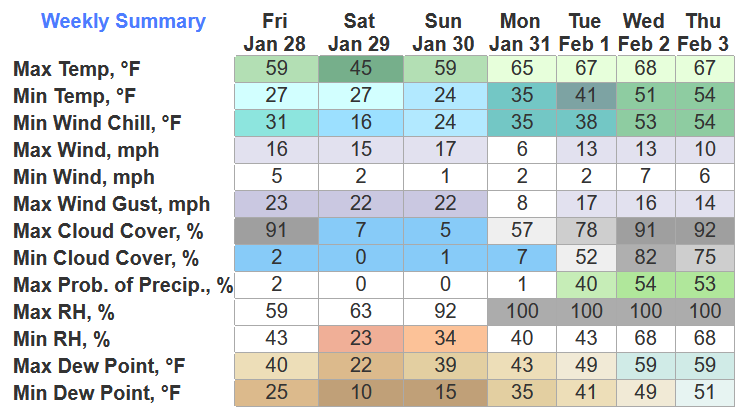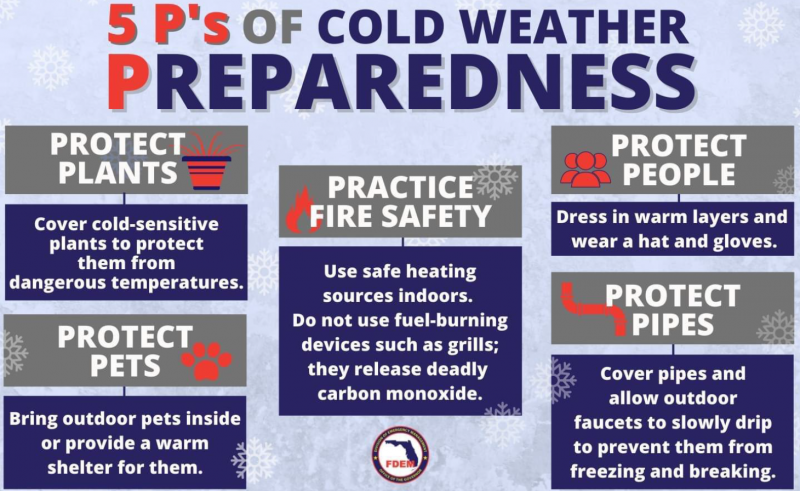Cold weather is forecast for this weekend, but how cold will it get in your area? The National Weather Service has developed a nice tool to help with this: https://www.weather.gov/forecastpoints. Once on the website you can either use a pointer on a map or the name of the nearest town or airport to provide a local forecast. The following is an example forecast for the Marianna Airport just north of Marianna, Florida.
You can see from this example spot forecast for January 28-February 3, 2022 that not only will the temperatures be dropping from an arctic cold front, but the winds will also be a factor right after the front passes. In this chart we can see that the lowest temperature expected will be 24° early Sunday morning. We can also see that even though the Saturday low is forecast at 27°, the 5-16 mph wind will create a wind chill of 16°. A forecast of this nature in the Florida Panhandle has warnings of importance for farms in the region.
–
Wind Chill on Livestock
Saturday morning is going to pretty cold for livestock who have been enjoying high temperatures in the 60s the previous week. A wind chill of 16° means livestock will need extra energy in their ration to cope well with the change in temperatures. The rule of thumb for winter feeding is that cattle need 1% more energy for every degree below 32°, with a dry winter hair-coat. So, on Saturday morning, when the wind chill is expected to be 16°, they will need 16% more energy than normal (32-16=16). The air will be colder on Sunday morning near day break as the temperature may fall to 24°, but forecasters are expecting calm winds, so the cattle will need 8% more energy than normal (32-24=8). Cattle will also have more appetite or higher feed intake when they are cold, so having adequate hay available can help this situation. Our tropical grass hays (bahia/Bermuda) typically provide near adequate energy for dry pregnant cows, but not for lactating cows with calves at their side. Bottom line, this weekend cattle need plenty of hay and extra supplemental feed for the next two nights. One other trick is to feed supplements in the evening rather than in the morning, as the activity from eating, rumination, and digestion can help reduce cold chill.
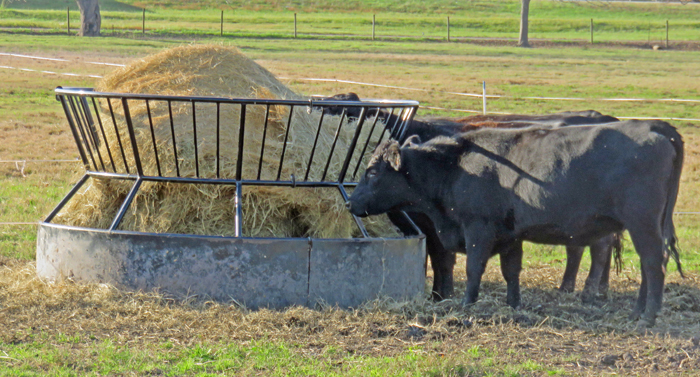
The rule of thumb for winter cattle feeding is that cattle need 1% more energy for every degrees below 32° with a dry winter hair-coat. Based on the current forecast, cattle will need 8-16% more energy to prevent weight loss this weekend. Photo credit: Doug Mayo, UF/IFAS
–
Cold damage to Citrus
Satsuma trees are grown in the Panhandle for two main reasons, the fruit is generally picked in November before hard freezes occur, and because mature trees can survive in temperatures down as low as 14°. Survival and thriving are very different, so most citrus producers utilize cold protection when nighttime lows fall down into the 20s. Wind chill is not an issue with plants, but the expected lows of 24-27° are cold enough to warrant cold protection with micro jet systems.
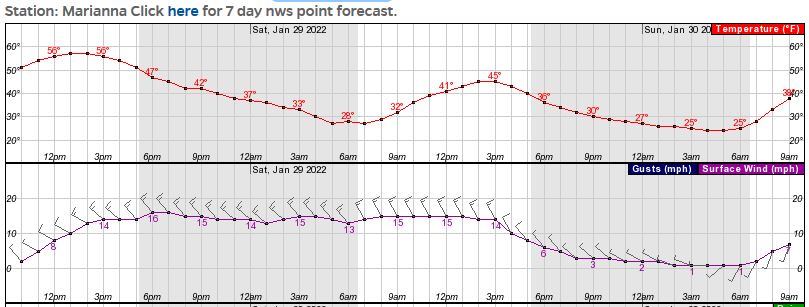
National Weather Service Zone Forecast for FAWN Stations. Credit: FAWN Cold Protection Tool Kit
Remember that the tubing at ground level may get colder in low areas than the reported 6ft air temperature, so make sure the system is running before air temperatures drop to 32°. Based on the chart above that provides temeparture timings, micro-sprinker irrigation systems should be turned on Saturday night around 6PM and stay on until 9AM. More information on this topic is available in the article: Satsuma Protection in Cold Weather Extremes and even more detail in the publication: Micro-sprinkler Irrigation for Cold Protection of Florida Citrus. There are also a number of tools available to monitor cold temperatures in real-time using Cold Protection Tools and the data from the nearest Florida Automated Weather Network (FAWN) Station.
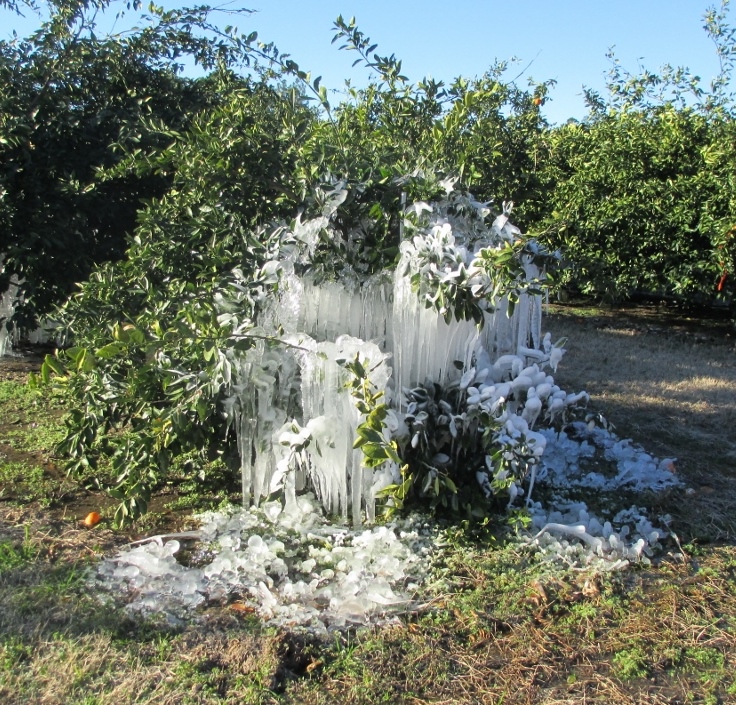
Citrus tree in Jackson County under the protection of a micro-irrigation system. Image Credit Doug Mayo
–
Pipes
Water pipes freeze when temperatures fall well below freezing. This is especially true with the modern PVC pipe. Most every homeowner knows to leave water dripping from exterior pipes, but on farms that can be a real challenge, as there are water lines all over the farm. Water lines to livestock water tanks typically are buried fairly shallow in the ground, but have adequate insulation from from the soil. However, the part that is above ground is exposed, and should at least be temporary insulated from the cold. As mentioned earlier cattle eat more when they are cold, but intake can be reduced without an adequate water supply. Livestock producers need to ensure water pipes are working well the next two days, and make repairs as soon as possible, if the pipes do freeze. Water tanks can go dry quickly if the supply is blocked from broken pipes.
–
The current weather forecast is not that extreme for this area, but it has been a few years since we have experienced an arctic blast of this nature. Be prepared and take precautions with the 5 Ps of cold weather preparedness. Bundle up when you go out, protect sensitive plants, animals, and water pipes. It will warm up again next week.
- Northwest Florida Beef Cattle Conference & Trade Show – February 11 - December 19, 2025
- Friday Feature:The Sears Catalog –How Rural America Shopped before the Internet - December 19, 2025
- November 2025 Weather Summary & Winter Outlook - December 5, 2025

